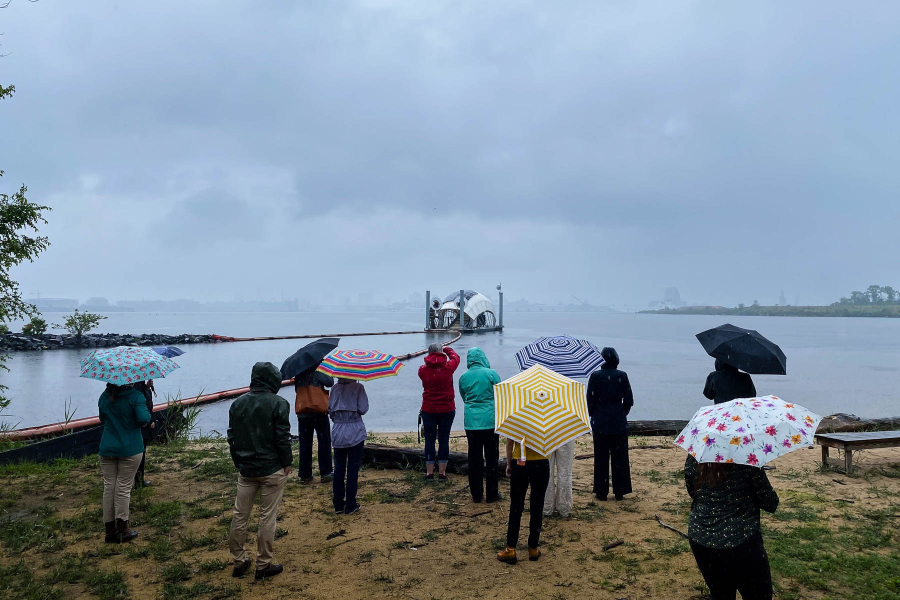Local leaders continue to play a key role in Bay restoration
New data reveals the knowledge and capacity of local officials

Councilmembers, town mayors and other local officials play a crucial role in the restoration of the Chesapeake Bay watershed, serving as the bridge between regional initiatives and community action. Their understanding of local needs and their direct connection to those who work and recreate along the water ensure that restoration efforts benefit not only the environment but also the economy, public health and infrastructure of their communities. By driving collaboration and fostering stewardship, they help turn broad environmental goals into meaningful, local initiatives that create lasting impacts.
Recent data from the Chesapeake Bay Program shows some promising progress related to the clean water work of local officials, but it also highlights areas that need improvement.
The Chesapeake Bay Program’s Local Leadership Workgroup conducted a biannual survey in 2022 and 2024 to assess the knowledge and capacity of local officials on water resource issues, regulations and conservation actions. Results showed that for officials representing mid-size and large communities (10,000 - 99,999 residents and 100,000+ residents) there was a slight decrease in the uncertainty that officials have around federal rules and regulations related to water resources. Results also showed a slight decrease in uncertainty among officials who’ve served 2-3 years, 3-5 years and 6-10 years.
Looking at conservation actions, the percentage of local officials who reported implementing and/or enforcing local ordinances or regulations increased from 47% in 2022 to 61% in 2024. The percentage of officials who reported applying for grants/funding to assist with projects also increased from 64% in 2022 to 70% in 2024. However, there was no change for the implementation of on-the-ground projects between 2022 and 2024, remaining at 54%. The percentage of local officials who reported adopting local ordinances or regulations decreased from 50% in 2022 to 44% in 2024.
Overall, the survey results revealed a positive trend—local officials reported fewer uncertainties regarding federal and state water regulations and an increase in the number of conservation actions they were implementing.
The role of the Local Leadership Workgroup is to increase the knowledge and capacity of local officials on issues related to water resources, and the implementation of economic and policy incentives that support conservation actions. The workgroup has developed a range of strategies to engage with local officials, including peer-to-peer learning exchanges, roundtable discussions and educational opportunities at conferences and partner events. The workgroup also communicates through newsletters, articles and blogs to reach local leaders with timely information and resources.
In 2023, the workgroup launched ProtectLocalWaterways.org to serve as a resource library for local leaders to make informed decisions to protect their local waterways. The learning library includes modules related to stormwater runoff, tree planting, green workforce development and a variety of other subjects that are important to conserve and restore waterways locally and across the watershed.
While the 2024 survey shows growth in the knowledge, capacity and conservation actions of local officials compared to 2022, it is important to note that there is insufficient evidence to demonstrate if these improvements are the direct results of the Local Leadership Workgroup's outreach and education efforts. It is possible that the changes reflect differences in the surveyed community rather than resulting entirely from workgroup efforts.
The survey results reaffirm the critical role local officials play in the broader Chesapeake Bay watershed restoration efforts. Local governments are responsible for key decisions that directly affect water quality, land use, conservation practices and so much more. Whether it's through land development regulations, stormwater management or public health policies, the choices local leaders make every day have major impacts on watershed health. Empowering these leaders with the knowledge and tools to make informed, sustainable decisions is essential for meeting watershed restoration goals

Comments
There are no comments.
Thank you!
Your comment has been received. Before it can be published, the comment will be reviewed by our team to ensure it adheres with our rules of engagement.
Back to recent stories